Content as Experience
- - - - - - - - - - - - - - - - - - - - - - - - - - - - - - - - - - - - - - - - - - - - - - - - - - - - - - - - - - - - - - - - - - - - - - - - - - - - - - - - - - - - - - - - - - - - - - - - - - - - - - - - - - - - - - -
day 1, 05.10.2007
etc publications host a workshop about content as experience
at
-----------------------------------------------------------------------------------------------------------------------------------------------------------------------------------------------------------------------------
| day 1 | day 2 |
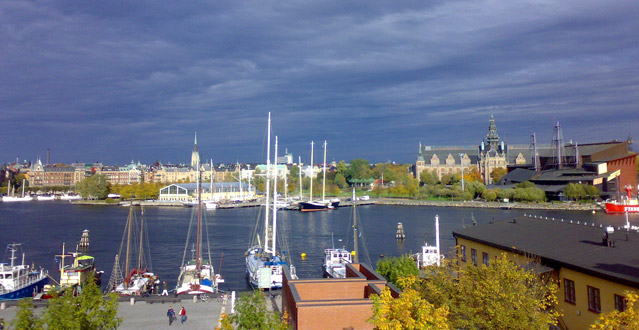
We are back in Stockholm. Thanks to Marcus Gärde and Berghs - School of Communication. Yesterday, during the lecture, we were talking about "the designer as an author" and about "content as experience". Today it is getting serious.
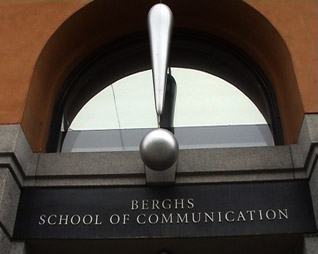
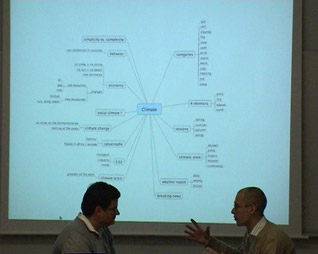
The briefing for a brief one and a half days workshop is rather complex. Six groups are asked to develop the main attraction for a newly build museum or science center which is made to adress the issue of climate. A factual approach around the terms climate change/climate crisis is possible just as well as a poetic approach on the seasons or clouds, as long as topic, message, experience and design aproached are clearly defined.
During the first half of the day initial ideas are discussed. The second half is used to specify the ideas further.
-----------------------------------------------------------------------------------------------------------------------------------------------------------------------------------------------------------------------------
HELL HOTEL
1st idea: The museum as a hotel where visitors can experience the impact of climate change, during a day and night stay, with several other departments, e.g. a school, workshop space etc.
Focus: The idea of a desaster hotel is strong. Since there is so much talk about the impact of travel, it might be interesting to include the travel aspect of the visitors, as part of the storyline.
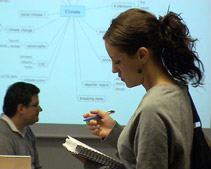
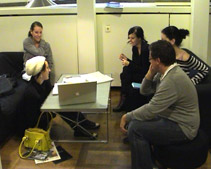
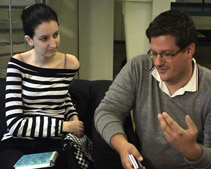
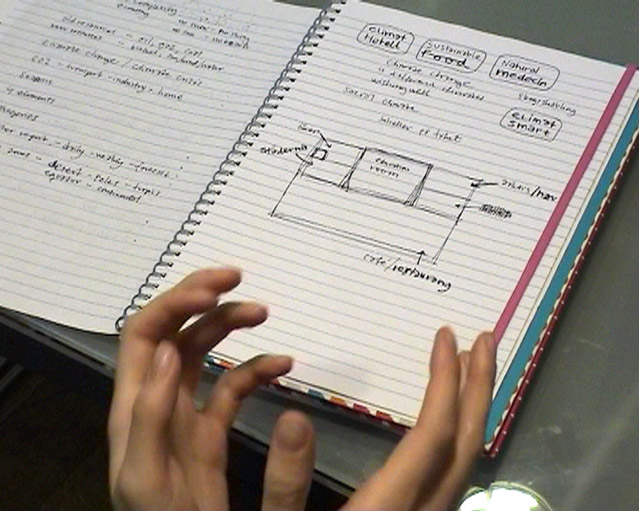
2nd idea: Visitors would book a journey and then get a discout according to the means of transportation the chose, when they check in at the hotel. Also at check in visitors will get a clima protection kit to emphasize the relevance of the experience. Visitors can stay in four rooms:
City Room (super busy with a lot of dust, fog, gas mask)
Water Room (underwater scenario, after the poles melted)
Desert Room (extrem heat and cold)
Climate Chaos Room (ruins, extrem wind, earthquakes)
Potential Claim: Go to Hell.
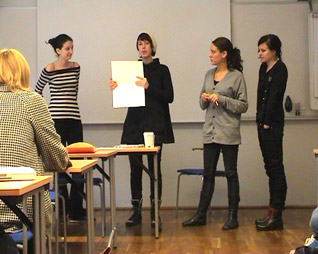
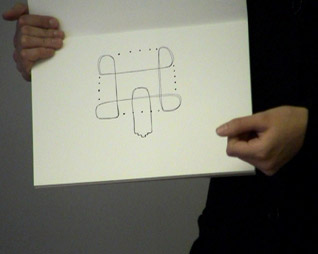
Task for Final Presentation: Produce moodboard for the rooms and the survival kit, maybe in the form of a broschure, review by an anonymous journalist.
-----------------------------------------------------------------------------------------------------------------------------------------------------------------------------------------------------------------------------
THE CLIMATE OF 07
1st idea: In a real city environment one block will be cut of by a glass cube to preserve the climate of the current year. Visitors will be able to see the difference between the actual outside climate and the 2007 inside climate every day.
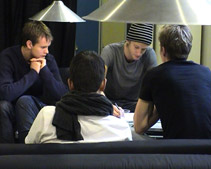
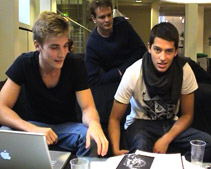
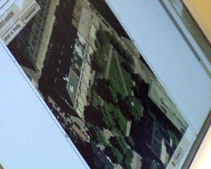
Focus: The idea is simple and very strong. But the link between the cube and the surrounding environment has to be defined, otherwise it would only be a landmark and not a museum / science center.
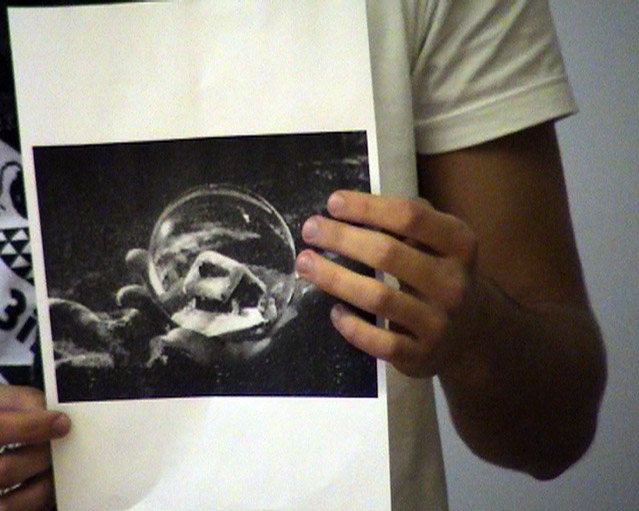
2nd idea: The group has taken a conscious decission not to include much more content around the cube, but suggests to that at night the cube could glow dependend on the CO2 emission around the cube during the day.
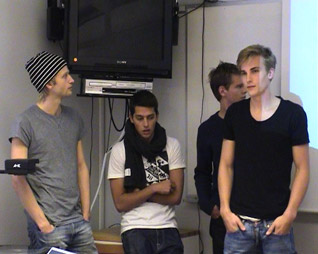
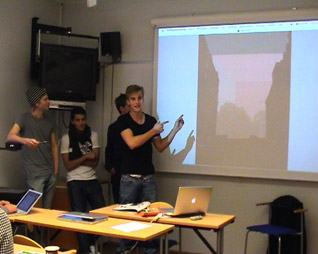
Task: Reconsider the decission of such little content and get the concept visualization stronger.
Interesting question raised during presentation:
Q: Will it rain in there?
A: Yes.
Q: And will there be birds ?
A: Yes.
Q: How many birds will crash against the glas, .... ?
-----------------------------------------------------------------------------------------------------------------------------------------------------------------------------------------------------------------------------
A DROP OF WATER
1st ideas: The whole exhibition should work without text. The aim is to create a media environemt that changes according to the decissions visitors make.
Focus: Media environments can leave strong impressions and allow for change and update in exhibitions. In the next step content and aesthetic should be defined further.
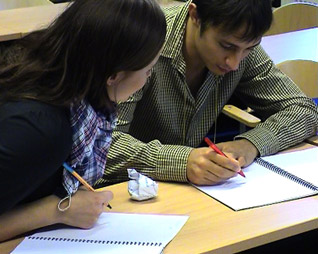
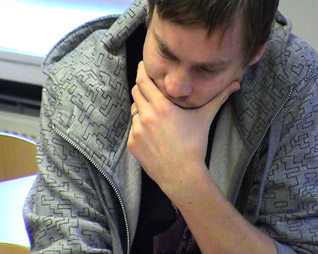
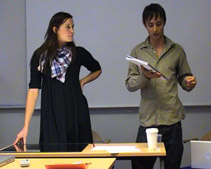
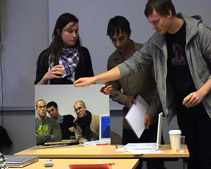
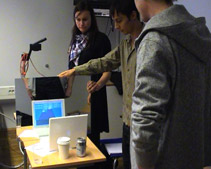
2nd idea: The museum would be in the form of a water drop and located at the seaside in stockholm. The outside would be a mirror fassade, so that the surrounding buildings and the water would be reflected. Inside visitors have all the choices and can see the how their decission affect the world projected on the immersive media environment. Via a timeline visitors can scale the effect of your choices over the course of time.
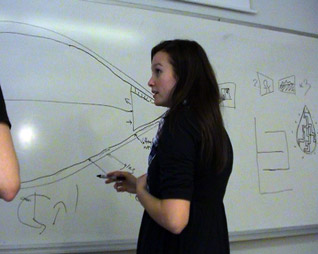
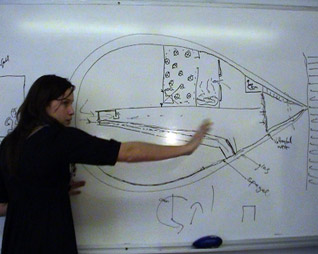
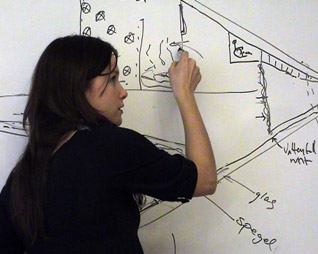
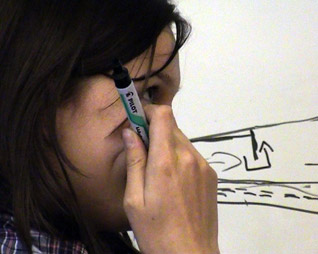
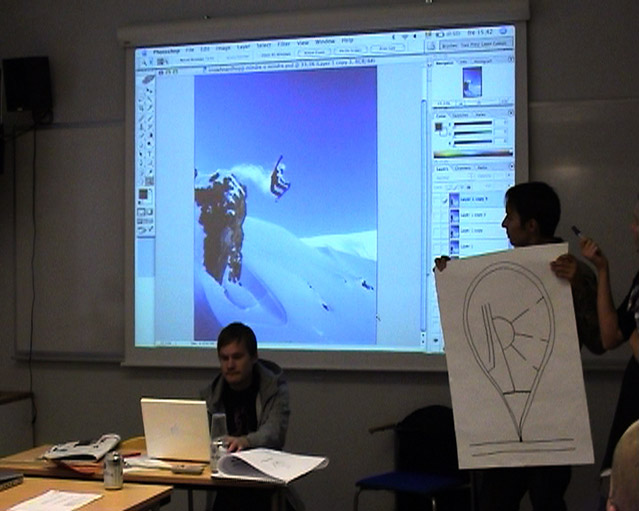
Task: Create a moodboard about interior and exterior and asthetic of the media or maybe a model.
-----------------------------------------------------------------------------------------------------------------------------------------------------------------------------------------------------------------------------
SPIRAL OF CONSUMPTION
1st idea: The show consists of two worlds. A fantasy world and a real world in contrast.
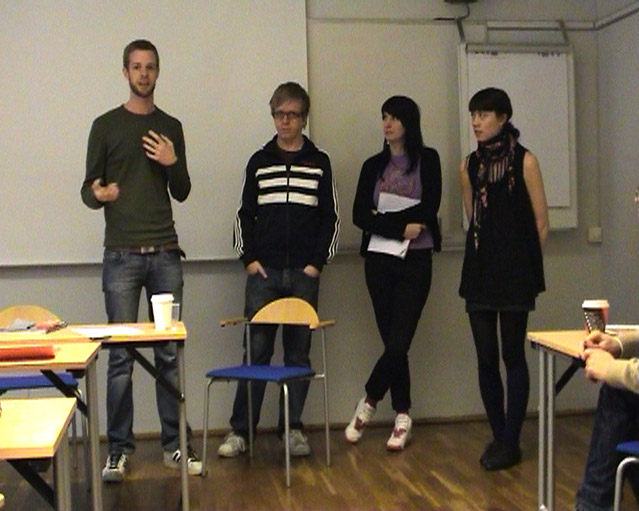
Focus: The contrast can certainly help getting the message across. What is the content in detail?
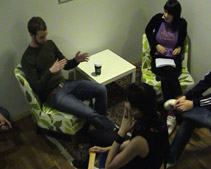
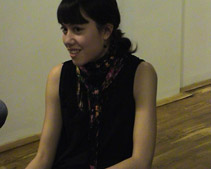
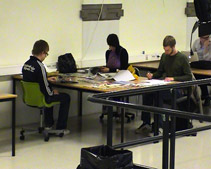
2nd idea: The visitors walks down four levels. They always enter the same room but at different levels of consumption with a lot of details in the rooms to explore. There is always a view to the effect of the consuption on the real world. But only as a last step visitors are forced to enter the ruined world and to experience the result of consumption.
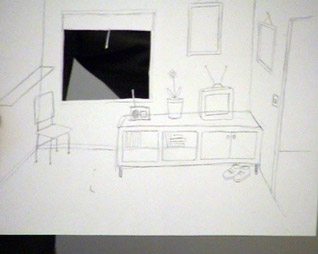
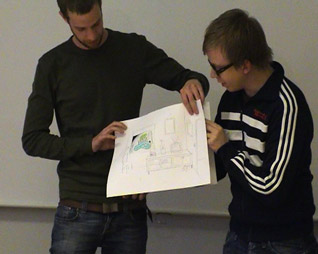
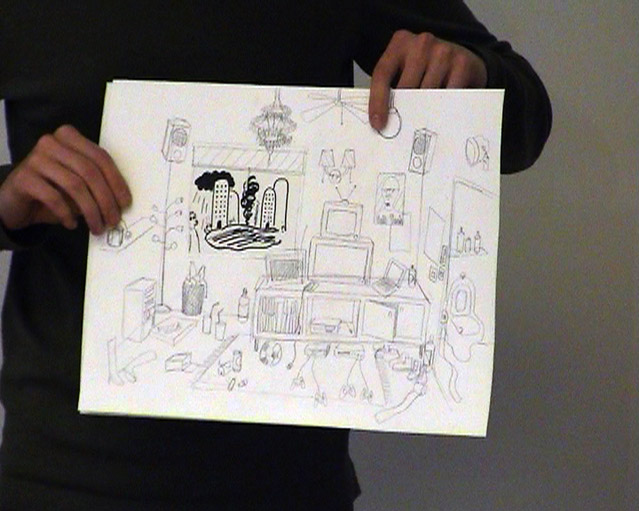
Task: Create a more detailed plan of the exhibition experience. Define at least one content in detail (e.g. the TV news show).
-----------------------------------------------------------------------------------------------------------------------------------------------------------------------------------------------------------------------------
WHAT YOU SEE IS WHAT YOU DID
1st ideas: Visitors should expererience how their choices influence the environment and how they can make a change. Results are to be transfered to longterm scale (e.g. see weather forcasts, ...) . The entrance to the museum offers different views on the surroundings (e.g. underwater, in sand, all foggy, ...)
Focus: Define the types of involvement of the audience further. Visualize the results of users actions in the form of weather report graphics.
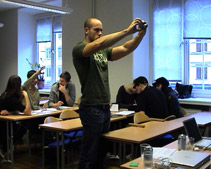
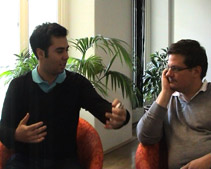
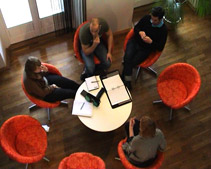
2nd idea: The concept will be extended e.g. by producing a newspaper every few hours that the visitors get at the exit as a documentation of their visit.
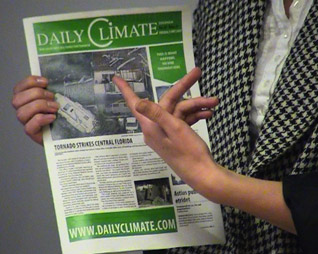
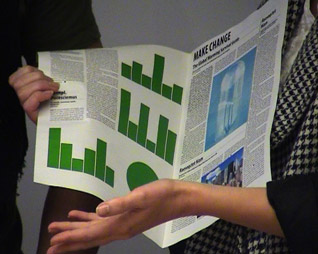
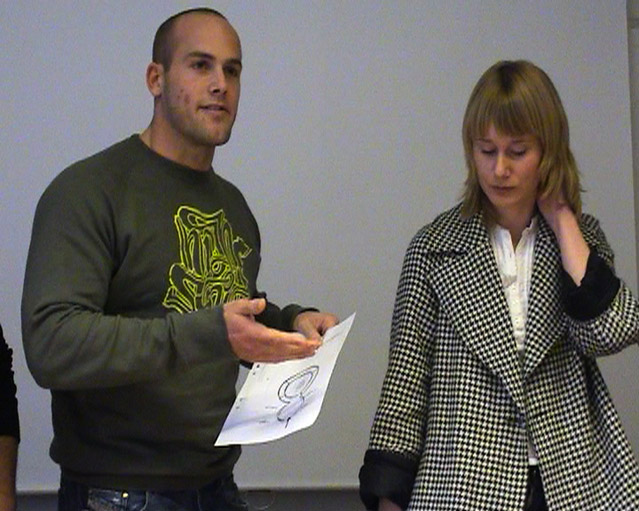
Task: Create a more detailed plan of the museum and experiences. Visualize the newspaper idea.
Quotes:
I am an ideas-giver.
I give ideas.
-----------------------------------------------------------------------------------------------------------------------------------------------------------------------------------------------------------------------------
3 SPHERES
1st idea: Either simulate the greenhouse effect according to visitors actions or visualize the lifecycle of a product and challenge visitors to recycle ofjects themselves.
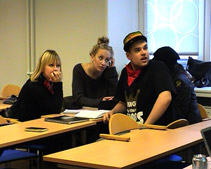
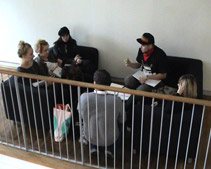
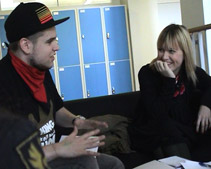
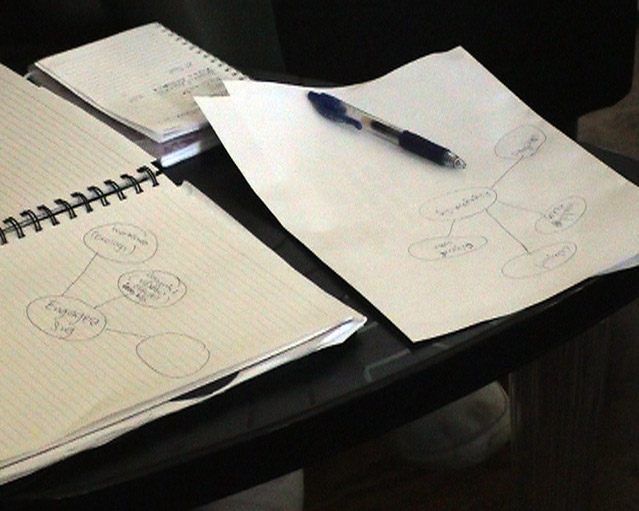
Focus: The lifecycle of a product will get more and more attention in the future and becom3e a criteria for the consumer to decide upon. It would be nice to have a lifecycle build in space for the visitors to experience all aspects and interact.
2nd idea: Rather than the focus on the lifecycle the group decided to create a poetic installation of three climates worth preventing.
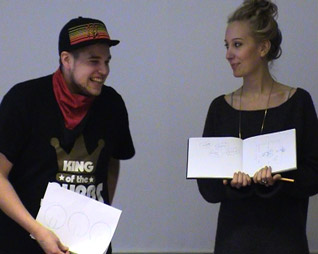
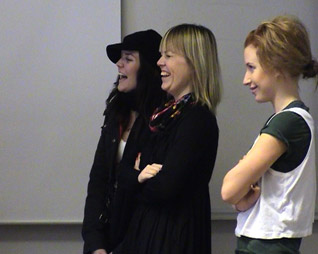
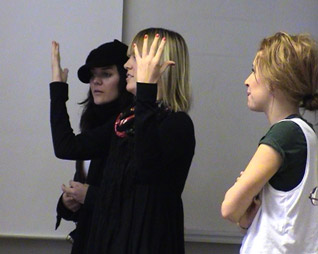
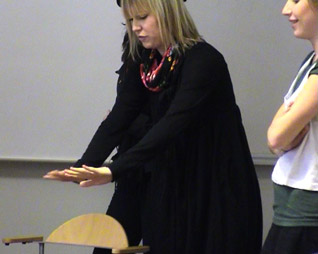
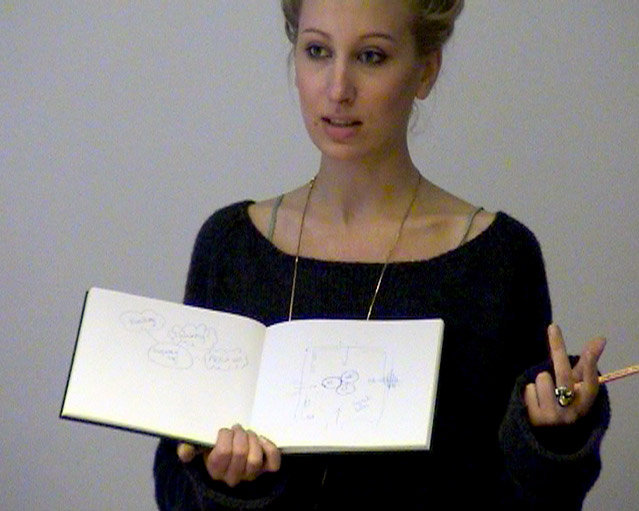
Task: Build a model, maybe stange the presentation in a seperate room that would be like one of the climate spheres (color, sound, ...).
-----------------------------------------------------------------------------------------------------------------------------------------------------------------------------------------------------------------------------
< back to top